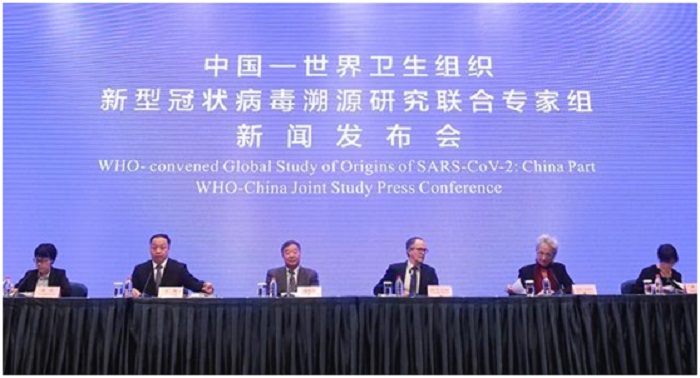



Chinese and World Health Organization (WHO) experts held a joint press conference in Wuhan, central China’s Hubei province, on Tuesday, February 9, reporting their work in the city as part of a global study on the origins of COVID-19.
After an outbreak of the novel coronavirus in Wuhan at the end of 2019, China took prompt action, actively released epidemic information, and adopted the most comprehensive and strict prevention and control measures, achieving notable results.
As the virus continues to rage across the world, China has actively supported the WHO in carrying out global study of COVID-19 origins in a bid to contain the spread of the novel coronavirus and prevent possible pandemic diseases in the future.
According to an agreement between China and the WHO in July 2020, an expert team from the WHO arrived in Wuhan on Jan. 14.
The WHO experts formed a joint body with Chinese experts and then kicked off the China part of the global study on the COVID-19 origins from three aspects, including epidemiology, molecular origins, as well as animals and environment.
The joint expert team studied a massive amount of epidemic-related data and visited nine facilities, including Wuhan Jinyintan Hospital, Huanan seafood market, and the Wuhan Institute of Virology under the Chinese Academy of Sciences (CAS).
It also conducted extensive exchanges with local medical workers, lab researchers, scientists, and market managers, and interviewed social workers, community workers, residents, recovered patients, and families of medical workers who lost their lives in the epidemic.
Building on scientific consensus, the Chinese and WHO experts have completed their work in Wuhan and basically achieved results from the joint study.
Among the outcomes, a coronavirus with high similarity to the novel coronavirus in gene sequences occurs in bats and pangolins. But the similarity is still not enough to make it a direct ancestor of the novel coronavirus.
Animals such as minks and cats are highly susceptible to the novel coronavirus, and bats, pangolins, weasels, cats, and other species all could be potential natural hosts.
The virus was found in environmental tests at the Huanan seafood market after its closure, especially in its aquatic product stalls. The coronavirus at the market might have been introduced through channels such as infected people, contaminated cold chain products, and animal products, but it is still uncertain.
No positive results occurred in large-scale testing of animal products in the market; no novel coronavirus was found either in samples of bats in Hubei province or large numbers of livestock, poultry, and wild animals across China; no evidence was found that the novel coronavirus was transmitted among livestock, poultry, and wild animals before and after the outbreak.
In December 2019, the novel coronavirus spread among people on a certain scale in Wuhan, with most cases occurring in the second half of the month.
The Huanan seafood market was an epicenter of the disease and attracted high attention from the disease control and prevention department in the early stage of the epidemic. However, a study on the early COVID-19 cases showed that when cases occurred at the market, other parts of Wuhan also saw cases at the same time.
The experts identified four hypotheses for the source of the transmission of the novel coronavirus to the human population, including direct zoonotic spillover, the cold-chain food, an intermediary host species, and a laboratory-related incident.
The joint study said that a laboratory incident is “extremely unlikely” as the cause of COVID-19.
It said introduction through an intermediary host species is “the most likely” passway. Direct transmission or introduction through cold-chain food is also likely.
The joint expert team also offered suggestions on future global study on COVID-19 origins.


The Executive and members of the.


The Acting Director, FCT Directorate of.


President Bola Ahmed Tinubu has been.



Barely a month after resignation of.


An Abuja based Legal Practitioner, Osuagwu.



Convener of Equitable Remedy, Mrs. Magaret.


Contractors handling the contract for city.


Nigerian government may have concluded plans.


The Diplomatic Correspondents Association of Nigeria.


A rights group, “Follow Me Talk.
Leave a Comment